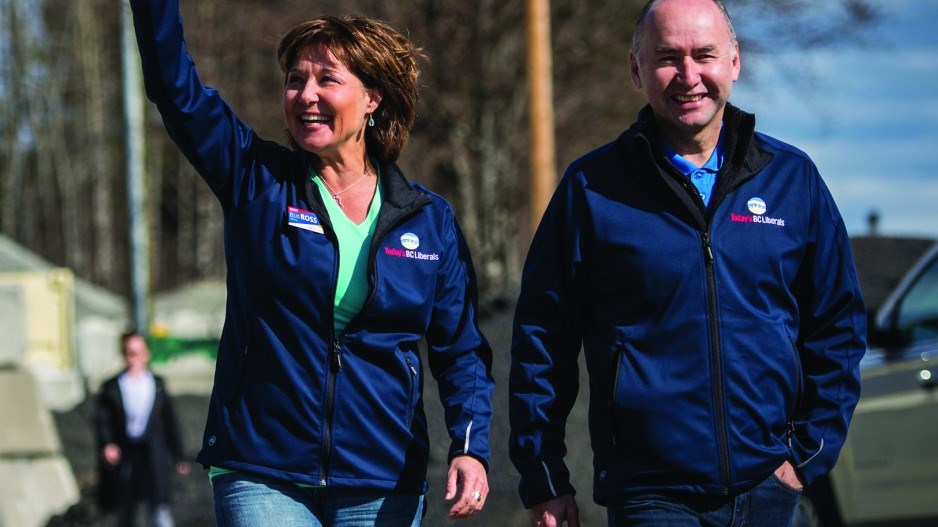Ellis Ross, former chief of the Haisla Nation, won the riding for the BC Liberal Party, but didn’t win the First Nations vote.
Even in Ross’ own Kitimaat Village, BC NDP candidate Bruce Alan Bidgood garnered more votes than Ross did.
“Kitsumkalum, Kitselas, Kitimaat Village, Nisga’a – historically they’ve all voted for the NDP,” Ross said. “But we made some inroads, though. At the very least, I think we made aboriginals question why they vote NDP in the first place.”
Ross was one of three First Nations candidates elected to the B.C. legislature in the May 9 provincial election, which is a record number.
Adam Olsen of the Tsartlip First Nation won the district of Saanich North and the Islands for the BC Green Party, and Melanie Mark – who in a 2016 byelection became the first aboriginal woman to be elected to the B.C. legislature – was re-elected as the BC NDP MLA for Vancouver-Mount Pleasant.
Ross was one of the Liberals’ star candidates – a high-profile First Nations leader who is unapologetically pro-business and pro-development, and was an early champion of a liquefied natural gas (LNG) industry. That has earned him a cabinet post as natural gas minister.
He has been an advocate of First Nations partnering with industry and investors as active business partners, and says economic development is the best path forward for First Nations seeking to become self-reliant.
“The only way you can really achieve that is through economic development because a treaty’s not going to provide you that answer, rights and title alone is not going to give you that answer, and certainly the Indian Act is not going to give you that answer,” Ross said.
That Ross will likely serve as an MLA on the opposition benches, rather than in government, makes his job tougher, especially given the antipathy the Green and NDP parties have toward LNG. But as the region’s new Liberal MLA, he is committed to pushing for an economic development agenda in his riding, which includes Kitimat, Terrace and Nisga’a territory.
“I campaigned heavily on economy and jobs for the region and the riding,” he said. “Our riding has been left out of the loop for so long, and LNG was supposed to bring us out of that, so that’s what I campaigned on, that’s what I promised and that’s what I’m going to fulfil.”
Ross was elected to band council in 2003 and elected chief councillor in 2011. He resigned as chief councillor in September 2016 to seek election as a BC Liberal candidate. The Skeena region has witnessed a steady decline in the traditional resource sectors of commercial fishing and forestry. So 10 years ago, when people started talking about positioning Kitimat as a potential LNG export hub, the Haisla Nation got on board.
The Haisla provided land and signed partnership and leasing agreements on three LNG proposals, the biggest being Chevron’s (NYSE:CVX) Kitimat LNG project.
As a result, Kitimat enjoyed a job boom, as companies like Chevron began laying the groundwork for those projects. The activity coincided with Rio Tinto Alcan’s multi-billion-dollar upgrade to its aluminum smelter in Kitimat.
But around the same time that the modernization project was wrapping up, market forces were spurring companies to start shelving their LNG projects, and jobs began drying up.
Like the Haisla, the Kitselas First Nation in nearby Terrace has also supported the development of an LNG industry. And like Ross, Kitselas Chief Councillor Joe Bevan still hopes to see an LNG industry develop.
“We see it as an economic opportunity for the northwest,” Bevan said. “Since the loss of the fishing industry, since the loss of the forest industry – I mean, the forest industry is a mere fraction of what it used to be – we see it as an economic opportunity.”
Energy analysts say it’s not likely that any major LNG projects will get a final investment decision before 2018. In the meantime, Ross said, he will be focusing on other potential economic development initiatives in his riding. One of them is the Skeena Industrial Development Park in Terrace.
“It’s actually a pretty exciting project,” he said, although he added that the plan needs more work.
“Mainly they want to do manufacturing. And they’ve got a good subdivided chunk of land, they’ve got a good source of water, they’ve got good infrastructure that they’ve got planned going in there.”
The 2,400-acre Skeena Industrial Development Park is a partnership between the City of Terrace and Kitselas First Nation. The plan is to develop manufacturing industries there, including factories from China.
It may be one of North America’s first significant “reshoring” efforts – a reversal of the trend of companies outsourcing manufacturing jobs to China, where products are made for export to the North American market.
The largest landowner in the park is Taisheng International Investment Services, a division of the Chinese state-owned Qinhuangdao Economic and Technological Development Zone. Taisheng bought 1,187 acres of land in the industrial park, and is now working to service the land and subdivide it.
The idea is to offer the land to Chinese manufacturers, which could source local raw materials, like wood and aluminum, to make their products in Canada, rather than ship the raw materials to China, then ship manufactured products back to North America.
“They’ve talked about metals, they’ve talked about aluminum, they’ve talked about food,” said Danielle Myles, economic development manager for the City of Terrace. “We continue to see investors coming in to take a look at the park. We’re expecting large delegations coming later this year.”
She added that she thinks Ross will be a strong backer of the industrial park project in the B.C. legislature.
“He works fast,” Myles said. “He’s going to be a good champion for us, for sure.”




